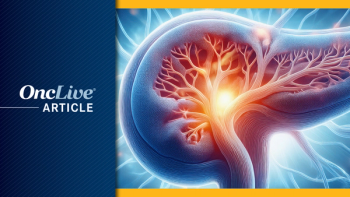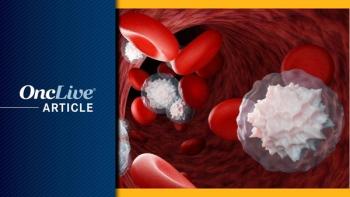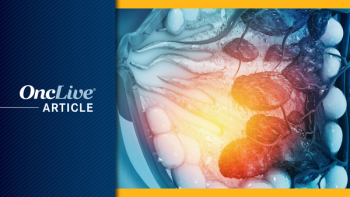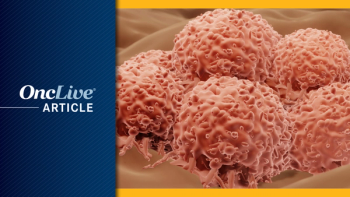
JDQ443 Demonstrates Early Efficacy Signals in KRAS G12C-Mutant Solid Tumors
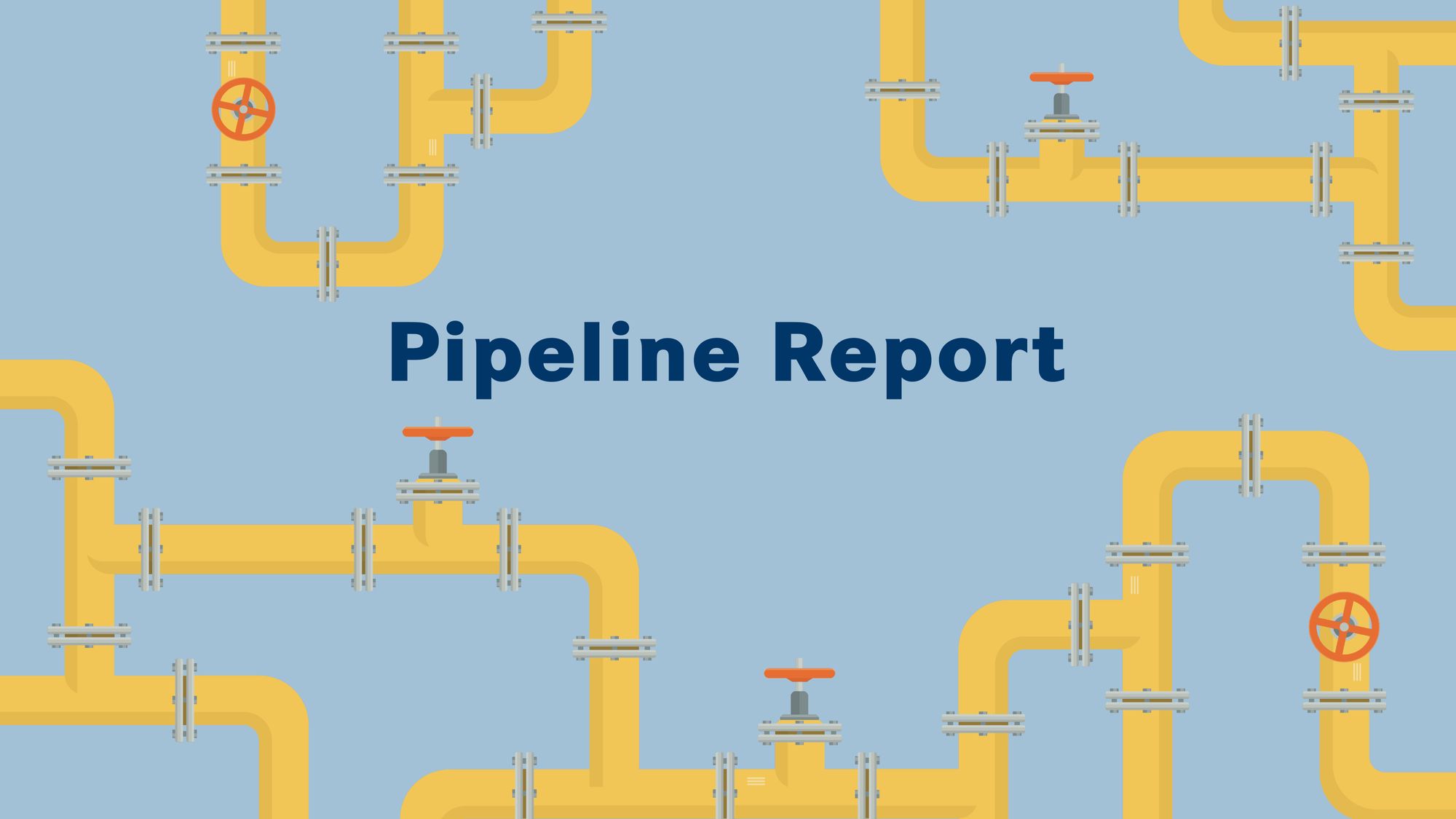
The novel KRAS G12C inhibitor, JDQ443, demonstrated early efficacy signals and a tolerable safety profile in initial data from the dose-escalation portion of the phase 1b/2 KontRASt-01 trial.
The novel KRAS G12C inhibitor, JDQ443, demonstrated early efficacy signals and a tolerable safety profile in initial data from the dose-escalation portion of the phase 1b/2 KontRASt-01 (NCT04699188) trial presented at the 2022 AACR Annual Meeting.1
As of the January 5, 2021, data cutoff, 39 patients received oral JDQ443 continuously across 4 dose levels: 200 mg once daily (n = 10), 400 mg once daily (n = 11), 200 mg twice daily (n = 11), and 300 mg twice daily (n = 7).
Across all dose levels, the overall response rate (ORR) was 28.2% including both confirmed and unconfirmed responses per investigator assessment. This included 8 (20.5%) confirmed partial responses (PRs). Stable disease was reported among 61.5% of patients, with 12.8% of patients experiencing disease progression. Two patients were not evaluable at the time of analysis.1
Investigators established the recommended phase 2 dose (RP2D) as 200 mg twice daily.
“Tumor responses were observed across all cancer types including non–small cell lung cancer [NSCLC], colorectal cancer [CRC], pancreatic cancer, and ovarian cancer,” said Daniel SW Tan, MD, senior consultant in the Division of Medical Oncology at National Cancer Centre Singapore and a senior clinician-scientist at the Genome Institute of Singapore in a presentation of the data.
“Focusing on the 20 patients with NSCLC…at the RP2D of 200 mg twice daily 4 out of 7 patients had a confirmed response and we await further enrollment to this cohort to get a better gauge of overall efficacy,” Tan said.
Specifically, among the subgroup of patients with NSCLC, the ORR was 45%, with confirmed PRs reported for 7 patients (35%). Investigators observed stable disease in 55% of patients, with no reports of progressive disease and 2 unevaluable patients in the cohort. The confirmed ORR at the RP2D was 57%.
The median duration of treatment was 15.9 weeks (range, 2.0-27.1). Tan noted that all patients with a response, confirmed or unconfirmed, were ongoing treatment at data cutoff.
In a discussion following the presentation, Tan added that 2 patients with CRC also had a response (1 confirmed and 1 unconfirmed), and both responses were in patients who received JDQ443 at 300 mg twice daily.
To overcome resistance observed with other KRAS G12C inhibitors, JDQ443 was designed with a novel binding mechanism that forms novel interactions with KRAS under the switch II pocket, irreversibly trapping KRAS G12C in the inactive, GDP-bound state.1,2 Compared with the available KRAS G12C inhibitor sotorasib (Lumakras) and the investigational agent adagrasib, JDQ443’s structure reaches residue C12 without any interaction with residue H95. In preclinical models, investigators observed cellular proliferation and inhibition of KRAS G12C signaling, and dose-dependent antitumor activity with the agent.1
In updated pharmacokinetic data, Tan noted a prolonged absorption with a median Tmax of 3 to 4 hours following administration with food and an average half-life of approximately 7 hours. “We predict target occupancy of over 90% in approximately 82% of patients,” he said.
Investigators evaluated the agent as monotherapy in the dose-escalation phase of the KontRASt-01 trial among patients with KRAS G12C–mutant solid tumors. The primary objectives were to assess safety and tolerability and identify the maximum and RP2D.
Patients with advanced KRAS G12C-mutated solid tumors who had received standard-of-care treatment or who were intolerant or ineligible for approved therapies were enrolled to the trial. Patients also were required to have an ECOG performance status of 0 or 1 and have no prior KRAS G12C inhibitor therapy.
The median age of the treated population was 60 years (range 26-76), and patients had received a median of 3 (range, 1-7) prior lines of therapy. A majority of patients had NSCLC or CRC (n = 16), with other tumor types identified as bile duct cancer (n = 1), ovarian cancer (n = 1), or pancreatic cancer (n = 1). Of note, only patients with NSCLC or CRC received the RP2D in the dose-escalation cohort.
In terms of safety, investigators reported that the maximum tolerated dose was not reached at the time of data cutoff. Treatment-related adverse events (TRAEs) occurred in 28 (71.8%) patients and included 4 grade 3 TRAEs. No grade 4 or 5 TRAEs were reported.
The most common TRAEs (≥ 10%) were fatigue (30.8%), nausea (17.9%), edema (15.4%), diarrhea (12.8%), vomiting (12.8%), arthralgia (10.3%), and pruritus (10.3%). Four grade 3 TRAEs were reported: fatigue (2.6%), neutropenia (2.6%), photosensitive reaction (5.1%).
In the RP2D cohort (n = 11), the most common all-grade TRAEs were vomiting (27.3%), edema (27.3%), and fatigue (18.2%). No grade 3 TRAEs were reported.
The dose-expansion cohorts are now actively enrolling patients with NSCLC and CRC to evaluate JDQ443 monotherapy at the RP2D. Patients with NSCLC must have been previously treated with a platinum-based chemotherapy regimen and an immune checkpoint inhibitor, either in combination or in sequence, unless ineligible for these regimens. For those with CRC, patients must have previously received standard-of-care therapy, including fluoropyrimidine-, oxaliplatin-, and irinotecan-based chemotherapy, unless ineligible to receive such therapy.
Enrollment is also ongoing in the combination arms of the dose-escalation cohorts for patients with solid tumors in which JDQ443 is administered in combination with the SHP2 inhibitor, TNO155, and/or the anti–PD-1 monoclonal antibody, tislelizumab.
Tan presented a case study of 1 patient with KRAS G12C-mutated duodenal papillary cancer who was treated with JDQ443 at 200 mg once daily and TNO155 20 mg once daily 2 weeks on 1 week off. After the second cycle, a CT scan showed a 44.2% reduction in the sum of the longest diameter of target lesions compared with baseline, for an investigator-assessed PR.
Further, investigators will compare JDQ443 vs docetaxel in patients with KRAS G12C-mutant NSCLC who have been previously treated with treated with platinum-based chemotherapy and immune checkpoint inhibitor therapy, in sequence or in combination, in the phase 3 KontRASt-02 trial (NCT05132075).3
References
- Tan DS, Shimizu T, Solomon B, et al. KontRASt-01: A phase Ib/II, dose-escalation study of JDQ443 in patients (pts) with advanced, KRAS G12C-mutated solid tumors. Presented at: 2022 AACR Annual Meeting. New Orleans, LA; April 8-11, 2022. Abstract CT033. Accessed April 11, 2022. https://www.abstractsonline.com/pp8/#!/10517/presentation/20171
https://www.abstractsonline.com/pp8/#!/10517/presentation/20171 - Brachmann SM, Weiss A, Guthy DA, et al. JDQ443, a covalent irreversible inhibitor of KRAS G12C, exhibits a novel binding mode and demonstrates potent anti-tumor activity and favorable pharmacokinetic properties in preclinical models. Mol Cancer Ther. 2021;20(suppl 12):P124. doi:10.1158/1535-7163.TARG-21-P124
- Study of JDQ443 in comparison with docetaxel in participants with locally advanced or metastatic KRAS G12C mutant non-small cell lung cancer (KontRASt-02). ClinicalTrials.gov. Updated April 11, 2022. Accessed April 11, 2022.
https://clinicaltrials.gov/ct2/show/NCT05132075



